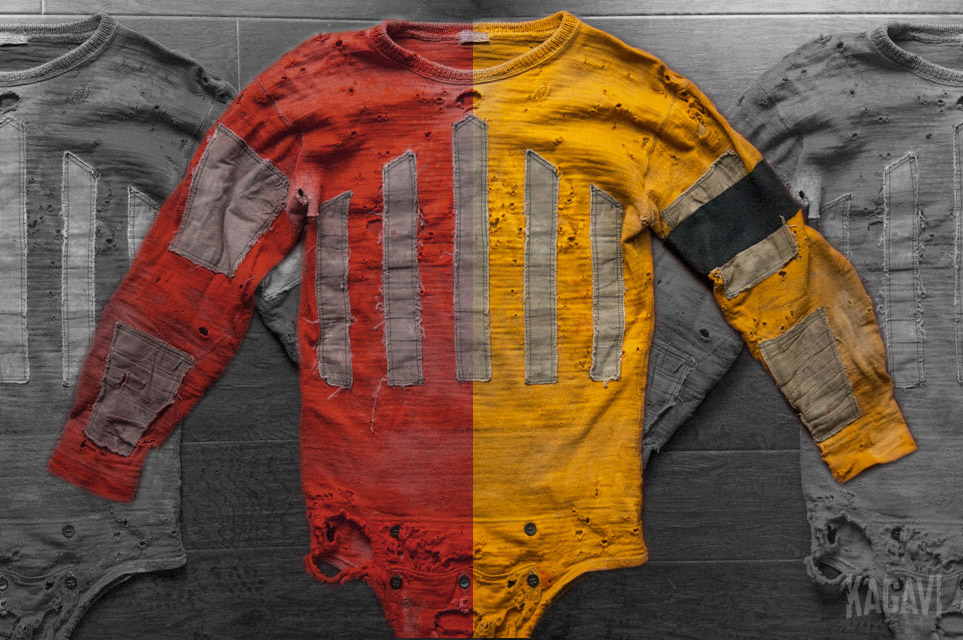
In 2014, I made the exciting discovery of an existing gold Iowa State University football jersey, worn by Jack Trice’s teammate Ira Young during the infamous 1923 season. Along with my previous story “The enigma of Jack Trice’s gold jersey,” these pieces of evidence laid out the compelling case for Jack’s iconic Iowa State jersey being gold during his only varsity season in Ames.
Case solved, right?
Not so fast. To my surprise, I’ve met some people who simply cannot believe that Jack Trice was wearing a gold jersey in the famous Iowa State pictures. The jersey was too dark and had too much contrast. Lending to the confusion, during the 2013 football season, Iowa State honored Jack by wearing throwback uniforms, but they were a deep cardinal color.
To conclusively show Jack Trice was wearing gold, let’s go beyond typical newspaper articles and begin with a slight detour across the Atlantic Ocean nearly 200 years ago.
_____________
In the French region of Burgundy wine country during the mid 1820s, a brilliant inventor named Nicéphore Niépce unwittingly started a revolution. Niépce, a former officer in Napoleon’s army, had dedicated his later years of life to scientific research and his interest was perked by the new art of lithography. Building on the work of others, he created a pioneering image of a blurry pastoral scene in Saint-Loup-de-Varennes, which is the oldest surviving photograph in the world. The race was on.
Over fifty years later, a Wisconsin farmer named Peter Houston created the first roll film camera in 1881. George Eastman eagerly licensed this invention for his nascent company Eastman Kodak and this technology allowed people such as Thomas Edison and French surrealist Georges Méliès to experiment with the new motion picture art form.
Thanks to the enormous market share of Eastman Kodak around the turn of the century, the eventual standardization of various formats settled on orthochromatic film using flammable nitrate stock. Orthochromatic was known for being blue-sensitive and this caused havoc with certain colors not reproducing naturally. Warm colors such as red and yellow appeared the same and often times red looked nearly black. Only cool colors showed any sort of significant difference. (Good overview here.)
It wasn’t until 1913 that Eastman Kodak’s vastly superior panchromatic film format appeared, but it was limited to small, expensive special orders with a short shelf life. Unlike orthochromatic, panchromatic was able to accurately reflect the tonal differences visible across the entire color spectrum, thus creating much more accurate black-and-white images.
Hollywood took its first tentative step forward with panchromatic in the lost 1918 silent film Queen of the Sea. Shot by Fox, the outdoor scenes used panchromatic, while the interior scenes stuck with the standard orthochromatic.
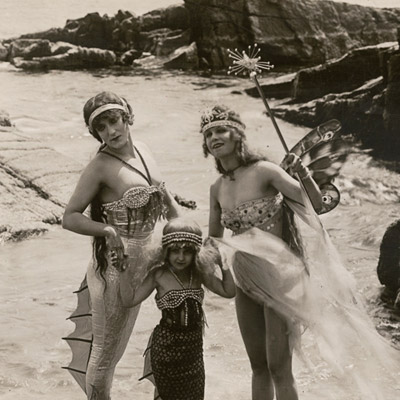
Despite Fox’s attempt, most films avoided the technology, due to its increased cost and inherent difficulty in matching costumes and scenes with two different film stocks.
Just a few months after Jack Trice arrived in Ames in fall 1922, The Headless Horseman opened in cinemas across America. Starring humorist Will Rogers, the film was the first to be shot entirely on panchromatic stock and was financed by Eastman Kodak to promote their panchromatic film that was now widely available, albeit still expensive. While filmmakers no longer had to place a special order, it wasn’t until 1926 when increased competition caused Eastman Kodak to lower the price of panchromatic. Price and availability were no longer barriers, so orthochromatic’s dominance crumpled. The switch was so total that Eastman Kodak completely discontinued general orthochromatic film production a few years later.
Popular advertisements of the era educated the American public on the superiority of panchromatic. (In the ad below, the photo on the left is orthochromatic, while panchromatic is on the right.)
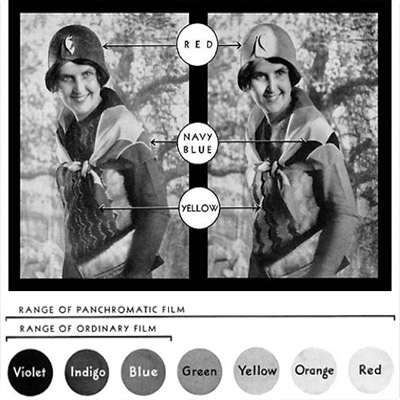
While Jack was at Iowa State, the complete shift towards panchromatic hadn’t happened yet, so it can be reasonably assumed that orthochromatic film was being used in 1923. Generally speaking, it’s highly implausible that a photographer working for a small agricultural college in the middle of a remote farming state would be using expensive panchromatic film stock that needed to be special ordered.
The early motion picture industry became intimately attuned with various tricks and techniques to work around the limitations of orthochromatic film. Faces needed to be covered heavily with various unnatural colors to translate correctly on screen. Cosmetics products cracked under the hot studio lights. A Polish immigrant named Max Factor (née Maksymilian Faktorowicz) saw an opportunity and his company quickly became the authority in cinema makeup for silent and talkie films.
Because many red shades appeared black in orthochromatic, many actresses performed with yellow lipstick and blue foundation. The lightness of yellow kept it from appearing totally dark, while orthochromatic’s sensitivity to blue made it appear as white on screen.
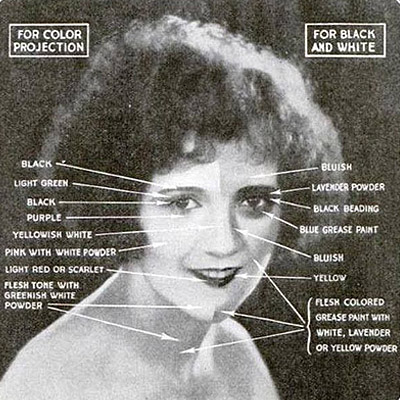
_____________
When Coach Sam Willaman unveiled the new gold O’Shea Knitting Mills jerseys in early 1923, the plan was to wear them all year long. When photographs of the Iowa State team were taken prior to the season, all were wearing the new outfits. In Jack’s first Iowa State game against Simpson College, because the Simpson team had brought gold jerseys, Iowa State had to scramble for some temporary cardinal jerseys that didn’t even have numbers. For the rest of the season, the Ames team was back in their usual gold togs.
If we revisit Jack’s photo, and pair it next to a photo of Ira Young’s 1923 gold jersey, converted to black-and-white, we can see how it appears in panchromatic. Even accounting for interior lighting, there’s a big tonal difference.
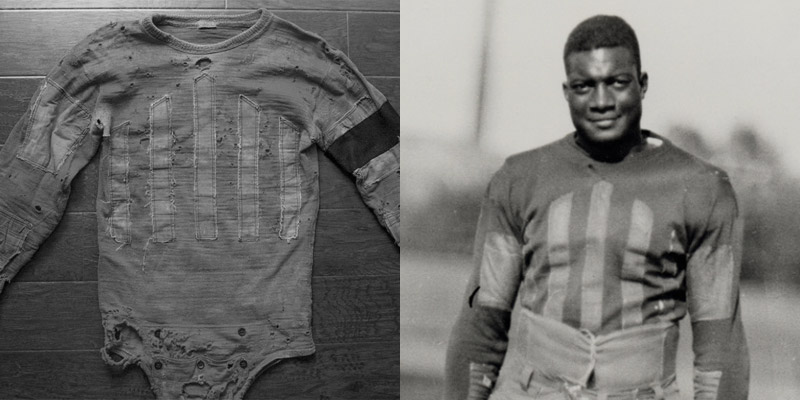
Sure, there’s a tiny, tiny chance that the Iowa State team had two completely identical sets of uniforms in 1923, however, most teams didn’t have two different home and away uniforms until many years later.
If the limitations of orthochromatic film technology are applied and we add in the knowledge that yellow lipstick was used as a substitute for red lips–because red could potentially appear black–let’s revisit the same color photo of Ira Young’s jersey and convert it to a general representative of orthochromatic.
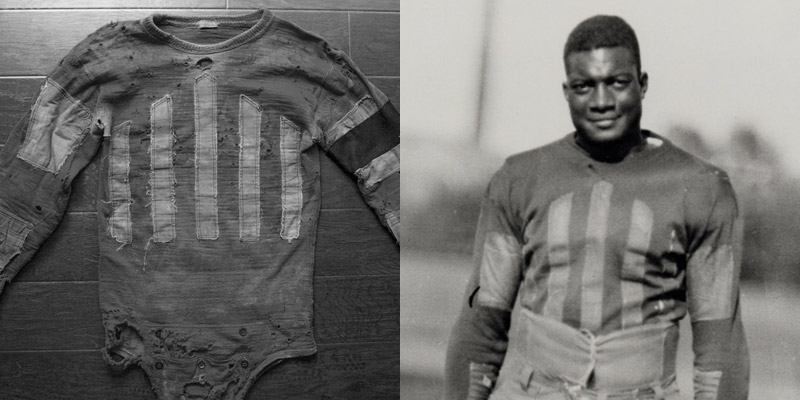
Much better. The gold jersey looks just about identical to Jack’s photo.
With the full understanding of existing film technology, plus the steps that Hollywood took to create the appearance of certain colors, it seems pretty concrete that Jack Trice is shown wearing a gold jersey in just about every single Iowa State photo from the 1923 season, including the spring game. (In my other exclusive discovery from 2014, I showed the only known original photo of Jack Trice in action during the Simpson game. Jack is wearing cardinal in that photo, but note how the gold jerseys of Simpson appear nearly identical–they are barely lighter.)
_____________
When Jack was carried off Northrop Field, bruised and broken, gold jersey torn, breathing ragged, he had given all to honor the colors of Iowa State for the final time. After Jack’s funeral, Iowa State distributed photographs of him in the gold jersey with the text of his famous letter printed on the back. That photo has endured for over 90 years now, showing Jack smiling slightly in his new jersey, the gold bright in the sunshine, the cardinal number 37 stretched across his broad back, wedding ring glinting.
In conclusion, the gold jersey is incontrovertibly tied to Jack Trice’s legend.
